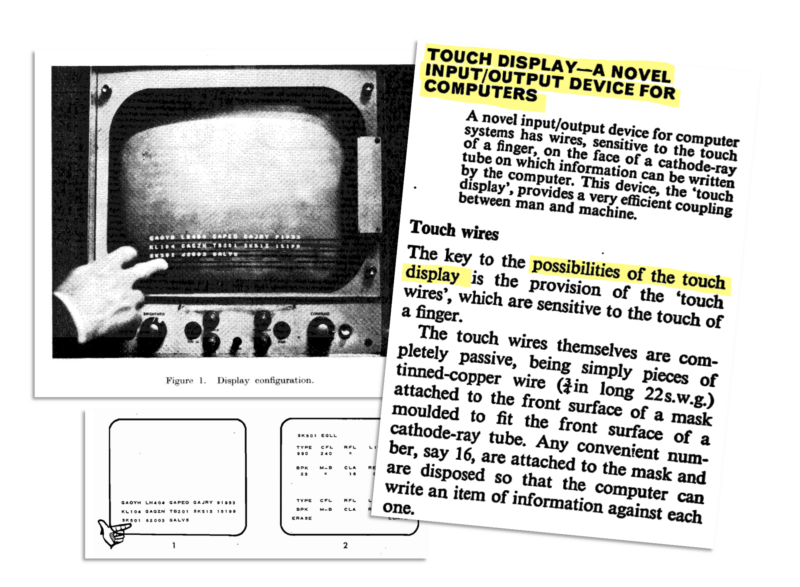Original article (in Serbian) was published on 20/04/2023
The daily Vecernje novosti published an article in its Easter issue under the title “The first touchscreen was developed in Nis 36 years ago”. In a touching story about the former Nis company “EI Televizori”, one of the engineers of the mentioned company, Zoran Stevanovic, recalls the year 1987, when that company produced “Jugotid”, which according to Novosti’s journalist, was “the first prototype of a touch device”. However, even though “Jugotid” kept pace with modern technology at that time, it cannot be claimed that “the first touchscreen was developed in Nis”.
When was the first touchscreen developed?
The first screen that was sensitive to the touch of a finger was created in Great Britain at the Royal Radar Establishment, a research centre sponsored by the Air Ministry. It was invented by engineer Erik A. Johnson back in 1965. In the same year, Johnson wrote about his invention in an article titled “Touch display – A novel input/output device for computers” in the scientific journal “Electronics letters”.
In the mentioned article, Johnson writes that his device has “wires, sensitive to the touch of a finger, on the front side of the cathode ray tube on which the computer can write information”. At the end of the article, he also states that one such device was made and “programmed for air traffic control tasks”, and that “his evaluation in this role is still ongoing”. Johnson explained his invention in more detail by attaching photographs in an article titled “Touch displays: A programmed man-machine interface”, published in the magazine “Ergonomics” in 1967, and two years later he patented his device.

Screenshot
Touchscreen development at CERN
At the beginning of the seventies of the last century, in the laboratories of the European Organization for Nuclear Research, better known as CERN, plans were made for the creation of a new research complex under the name Super Proton Synchrotron (SPS). SPS is currently the second largest machine in CERN’s accelerator complex and is almost seven kilometres in circumference. It is used, among other things, to search for matter as it could have been in the first moments of the universe.
Such a complex machine would have to be controlled using hundreds of buttons and switches, so researchers and engineers at CERN decided to find a more efficient way to control the machine. Frank Beck, who would later become in charge of the central control hub in the SPS control room, asked the Danish engineer Bent Stumpe to solve the problem. In just a few days, Stumpe suggested to Beck that they create a capacitive touchscreen with a fixed number of buttons featured on the display. The proposal was accepted, and Beck and Stumpe described their technology in detail in a report from May 1973. This technology was used in the SPS control room until 2008 (1, 2).
Commercialization of touchscreens
Although touchscreens developed at CERN were commercialized and sold to institutes and companies already at the end of the seventies, true commercialization occurred in the early eighties of the last century, when touchscreens became more widely available. In 1983, the company Hewlett-Packard – HP presented its new computer HP 150 to the public, which, in addition to the keyboard, also had a touchscreen. The HP 150 personal computer cost a little less than 3,000 US dollars, and this company earned about 350 million dollars from that model by 1985.
However, touchscreens in the early eighties were not only reserved for bulky personal computers of the time. The Japanese company Casio, known for the production of watches, launched its Casio TC-500 watch on the market in the same year that the HP 150 computer was introduced to the world. As described in the instructions for using the watch, it has a CTDS (Crystal touch detection system) that enables calculations by touching the surface of the screen with a fingertip.



